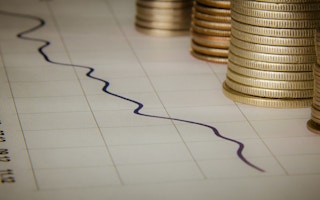A high-ranking official of the Nigerian finance ministry once asked me: If a carbon tax were implemented for fiscal reasons, who or what would guarantee that the revenues would be spent efficiently?
It was 2015, and I had just published my first paper ever—a theory piece on the benefits of carbon taxes from a finance minister’s perspective. Yet, because I hadn’t considered implementation, I was not able at that time to give him a satisfying answer. Today, four years later, I finally can, thanks to the findings of my latest study.
In today’s world, two large-scale global challenges have taken centre stage. On one hand, there is a widespread underprovision of basic necessary public goods such as public health systems, education and access to clean water. The United Nations’ Sustainable Development Goals (SDGs) were set up to address many of these issues. On the other hand, there is an overuse of the atmosphere as a place to dispose of greenhouse gas emissions.
So far, the two problems have mostly been dealt with separately. As my research shows, carbon pricing could be the key to address both challenges at the same time.
Flipping the Switch
Currently, governments subsidise fossil fuel in support of certain industries or to keep fuel prices low for consumers. This is a burden not only for the environment but also for national budgets. To give an idea, in the countries we analysed, the total amount spent on fossil fuel subsidies would have been enough to finance 20 per cent of the estimated total public financing needs for the SDGs. Removing these subsidies would free substantial domestic public funds for other urgent uses, like alleviating extreme poverty. National carbon prices would generate still more public funds—while reducing carbon dioxide emissions throughout the economy.
In some specific examples, redirecting fossil fuel subsidies alone could cover more than half of the public financing needs for the SDGs. We found this to be the case in Togo, the Republic of Congo and Bolivia. In Egypt, redirecting subsidies would even cover the SDG financing needs completely. Revenues from fiscal reform that both removes subsidies and replaces them with a carbon price consistent with the 2°C target could provide more than two-thirds of the public funds required for the SDG agenda for several countries in South and Southeast Asia. In India, for example, more than 90 per cent of the entire public financing needs for the SDGs could be covered.
In other words, a policy that flips the switch from negative carbon prices (i.e., fossil fuel subsidies) to positive carbon prices has a huge potential to make progress toward the SDGs.
“
In the countries we analysed, the total amount spent on fossil fuel subsidies would have been enough to finance 20 per cent of the estimated total public financing needs for the SDGs.
In the least-developed countries of sub-Saharan Africa, however, the financing potential of carbon revenues is often outweighed by the especially strong development needs. Here, financial support from industrialised countries is needed in addition to carbon prices. Still, in some such countries carbon pricing could contribute more than one-fifth of the required public funds for reaching the SDGs—countries like Burundi, Mauritania, Nigeria, the Republic of Congo, Senegal, Swaziland, Togo, Uganda and Zimbabwe.
Balancing the scales
Put it all together, and it’s clear that carbon pricing could balance the scales of climate policy and the sustainable development agenda. Switching from fossil fuel subsidies to carbon pricing could make a key contribution to sustainable development by covering a significant part of the required public funds. In the end, the best argument for carbon pricing may be that using revenues to finance sustainable development yields huge benefits for the broad population.
Asked again today, this would be my answer to the Nigerian official’s question: The SDGs now offer political leaders a roadmap to ensure that revenues from a carbon tax would be well spent. By connecting them to a carbon tax, we can ensure that we not only address climate change, but finance the local school, the hospital and the road leading to them as well.
Max Franks is a member of the Policy Instruments group at the Potsdam Institute for Climate Impact Research. This post was republished from Ensia with permission.















